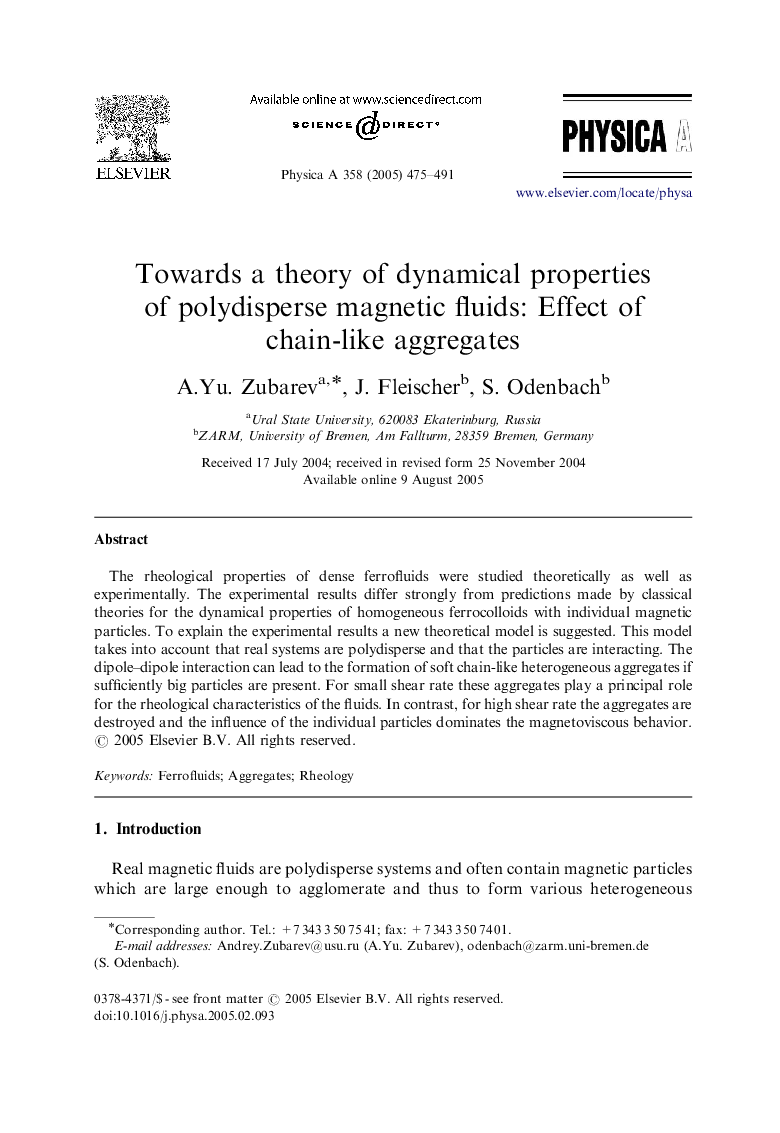| Article ID | Journal | Published Year | Pages | File Type |
|---|---|---|---|---|
| 9727520 | Physica A: Statistical Mechanics and its Applications | 2005 | 17 Pages |
Abstract
The rheological properties of dense ferrofluids were studied theoretically as well as experimentally. The experimental results differ strongly from predictions made by classical theories for the dynamical properties of homogeneous ferrocolloids with individual magnetic particles. To explain the experimental results a new theoretical model is suggested. This model takes into account that real systems are polydisperse and that the particles are interacting. The dipole-dipole interaction can lead to the formation of soft chain-like heterogeneous aggregates if sufficiently big particles are present. For small shear rate these aggregates play a principal role for the rheological characteristics of the fluids. In contrast, for high shear rate the aggregates are destroyed and the influence of the individual particles dominates the magnetoviscous behavior.
Keywords
Related Topics
Physical Sciences and Engineering
Mathematics
Mathematical Physics
Authors
A.Yu. Zubarev, J. Fleischer, S. Odenbach,
